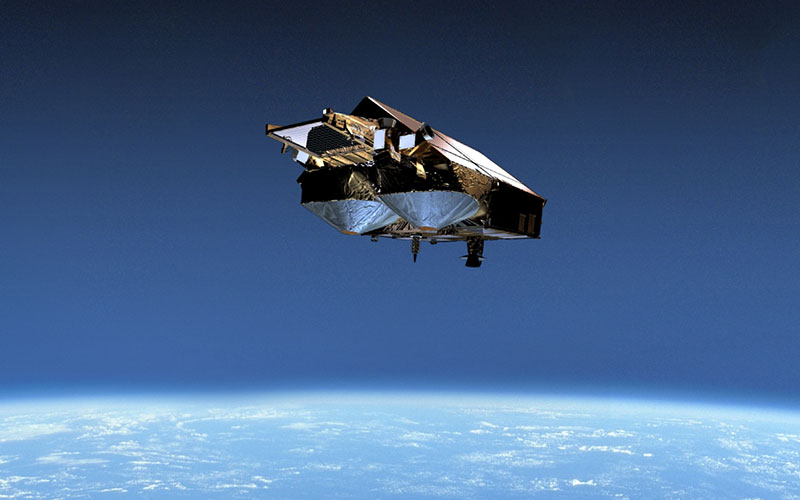
The European Space Agency has avoided an early end to its CryoSat mission after a fuel leak was detected aboard the satellite.
CryoSat was launched aboard a Dnepr rocket from Baikonur in April 2010. The satellite’s mission is dedicated to measuring the thickness of polar ice and monitoring ice sheets that blanket Antarctica and Greenland.
The satellite is a unique asset, serving as the only mission of its kind to measure at latitudes above 82° north and south. This makes it uniquely capable of recording the contribution of glaciers, ice sheets, and ice caps to global sea levels. Its value to climate change monitoring is, as a result, priceless.
Technically speaking, the mission referred to as CryoSat is actually CryoSat-2 because the first version of the satellite was lost in a Russian Rockot launch failure in October 2005. Despite the setback, in 2006, ESA member states selected to push on and rebuild the satellite. Amazingly, the team managed to build a second CryoSat in just three years, with ESA announcing in 2009 that CryoSat-2 was ready for launch.
When it was launched in 2010, ESA hoped that the satellite would remain operational for at least three years. 2023 marks the thirteenth year of operation. This 13-year continuous data record of polar ice is simply remarkable.
Despite having enough fuel and capability to continue for as much as five to ten years, CryoSat’s future was left on shaky ground after a fuel leak was discovered in 2016 by operators at ESA’s European Space Operations Centre (ESOC).
After an investigation, experts at Airbus and ESA pinpointed the location of a fuel leak in one of the satellite’s small attitude thrusters. The leak was initially small but increased over the years until it reached a stable rate that would have, if nothing had been done about it, brought an end to CryoSat’s mission by 2025.
As of 2023, the satellite has 13 kilograms of propellant left, which is 13 kilograms less fuel than it should have based on the use of its thrusters. When the fuel drops below 5 kilograms, the satellite will no longer be able to remain in stable orbit.
While shifting over to the satellite’s backup propulsion system would have solved the issue, ESA officials were weary about doing so as several years after launch, it was difficult to guarantee the reliability of this system. However, the agency had to weigh that risk with its aim of ensuring CryoSat continued to provide data until its replacement, the Copernicus Polar Ice and Snow Topography Altimeter (CRISTAL), is launched in 2027.
“The backup hasn’t been needed during the 13 years that CryoSat has been in space,” said CryoSat Spacecraft Operations Manager Jens Lerch. “During this time, it could have suffered a similar leak or been damaged by something like a micrometeoroid – and we had no way to test it previously without exposing us to the same risks we faced today.”
On 21 November at 10:45 CET, operators at ESOC initiated the swap to this backup system. After 25 tense minutes, telemetry confirmed that the switch had been successful. Long live CryoSat!







